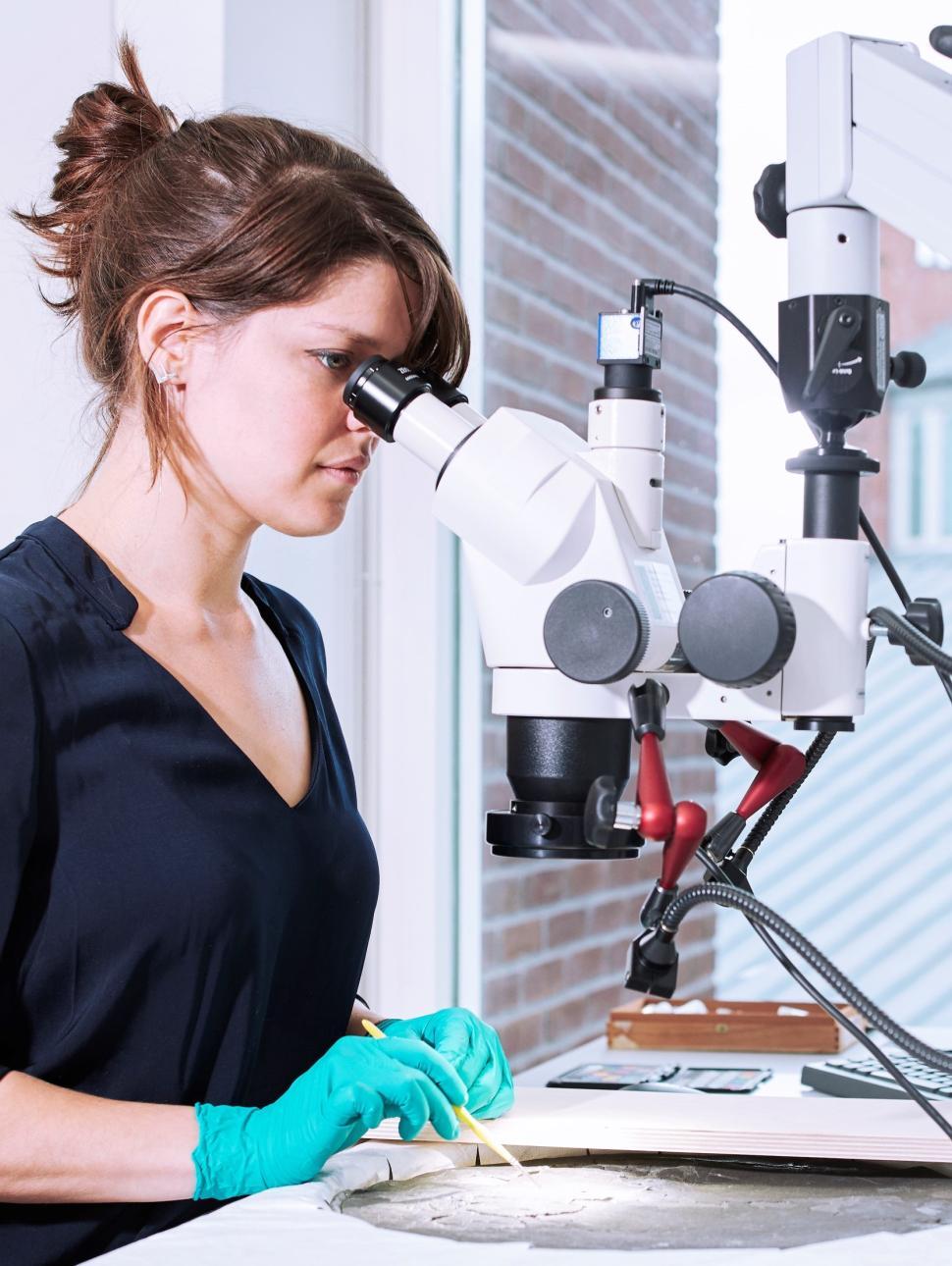
Just a Mess Dish
de Vlamingh Plate
This is the ordinary mess dish, from William de Vlamingh’s Geelvinck, which, in 1697, was chosen as the most durable object on which to place an enduring message for those who may find it in following decades. It was used to replace the plate left by Dirk Hartog in 1616, on the island named after him. A copy of Hartog’s plate, is in the cabinet opposite (the original is in Amsterdam's Rijk's Museum). A comparison of the two shows clear differences between them. The inscription on Hartog’s plate has been crudely cut into the metal, with little thought given to spacing or calligraphy. The inscription on de Vlamingh’s plate has been carefully laid out and the lettering done in a most artistic style. Both objects show signs corrosion from long exposure in the treacherous maritime environment. Willem de Vlamingh’s plate also shows damage done by the people who handled it. Firstly, the Dutch used round sheathing nails to hold it to its post while the French, in 1801, used big, rectangular deck nails to attach it to a spar, which gouged large holes in it.
The intrinsic value of de Vlamingh’s plate is negligible, it is just a pewter dish. Historically, though, it is a priceless piece of history.

Dutch conservation specialist Tamar Davidowitz from the Rijks Museum examining the Hartog plate.
Credit: Rijks Museum

De Vlamingh Plate Cabinet
Credit: WA Museum